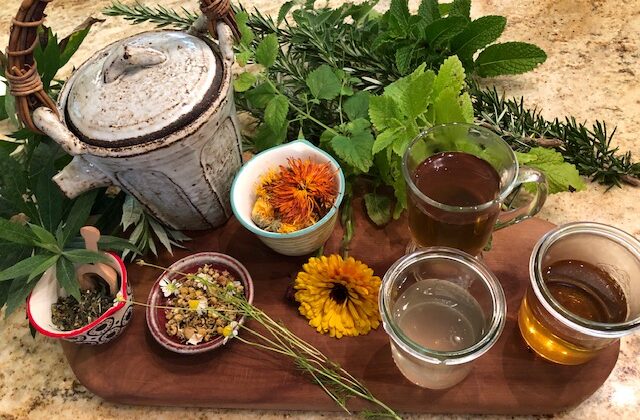When I was about three years old, I saw my grandmother taking care of her tiny garden (Japanese saying that the size of a cat’s forehead )by the cliff of stream in front of her house.
Her loving and naturing energy to her garden’s vegetables and flowers helped them so cheerful to serve us.
It was fascinating to see them grow a little bit each morning with blight sunshine, cloudy sky, or even a rainy day with a smile because humans tend to get depressed on a cloudy day and feel sad on a rainy day.
My ground mother was a local healer to help babies who cried at night excessively and women who had Postpartum depression and hormone imbalance. She took me to Forrest to forage to find medicinal herbs/plants and mushrooms.
I always wanted to have my own garden someday and forage wild plants.
When I was seven years old, I created my tinier plant container flowers garden with a wood apple box from a fruit market in front of the five unite rental complex my parents were renting. Many people who passed by gave compliments on how beautiful my flowers were.
Since then, I have continued my garden wherever I lived, whether just a few planting pots by the window in my school dormitory or 50 plastic pots by the entrance of a guest house in Los Angeles.
I finally moved to the Santa Monica house where I have now since 1985, and when I started macrobiotic first stripped the lawn and created my rustic garden with bamboo and herbs.
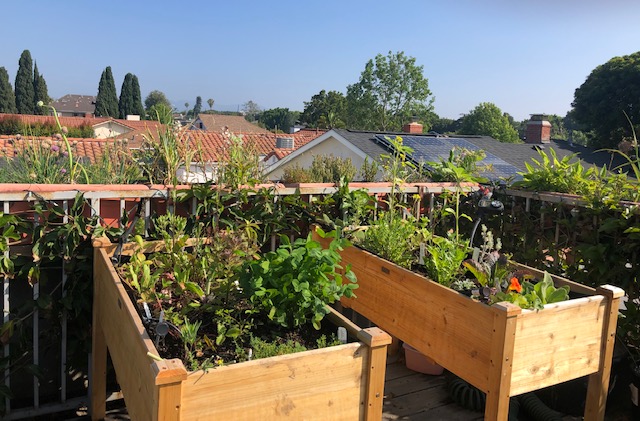
I planted native California plants in the sidewalk area and built a rooftop container garden to grow medicinal herbs.
Many birds, butterflies, bees, caterpillars, ladybugs, and squirrels come to my garden and enjoy themselves—hummingbirds and doves nests on the tree branches.
I started to study herbology in 1995 with David Crow (founder of Floracopeia) at California Healing Art College in West Los Angeles.
I learned so much about native California plants and medicinal herbs.
I enjoyed recognizing those herbs when I go hiking and start foraging.
I have been learning about medicinal herbs and plants for a long time with macrobiotics.
I especially enjoy growing native California plants and medicinal herbs to make my healing tea and infused oil for my skin, health, and pain relief. I have been hoping to share what I do for a while.
Recently, Merrihew’s Sunset Garden’s new owners, Frank and Ati, were interested in what I do.
We started to talk about something we could do together.
I started going to Marrihew’s Sunset Garden since 1985 (they have been in business since 1947), and I never thought I would teach there, but my wish comes true, and I will be teaching there.

Medicinal Tea from Your Garden
Saturday, June 18th
11 am ~ 12 pm
Merrihew’s Sunset Garden
1526 Ocean Park Boulevard
Santa Monica, CA 90405
– outside classroom next to the chicken coop
$40/person
LEARN:
-medicinal benefits of 5 different herbs or more
-how to make infusions of fresh and dried herbs (i.e., hot tea, sun tea, sprays, etc.)
-tips for growing the herbs in your garden/pots (you can even grow a lot in a small space!)
-how/when to properly harvest the herbs
-how to dry the herbs
-fresh vs. dried
* Three kinds of organic medicinal tea tasting and handout included!*
To register and pay for the class, please go to this link
I hope some of you can come to learn plant healing power and taste them and enjoy the outdoor class ambiance.
Love, Sanae❤️
BENEFITS OF HERBS:
Disclaimer: The information offered is for educational purposes only!
Here are the benefits of the medicinal herbs/plants I use for the class.
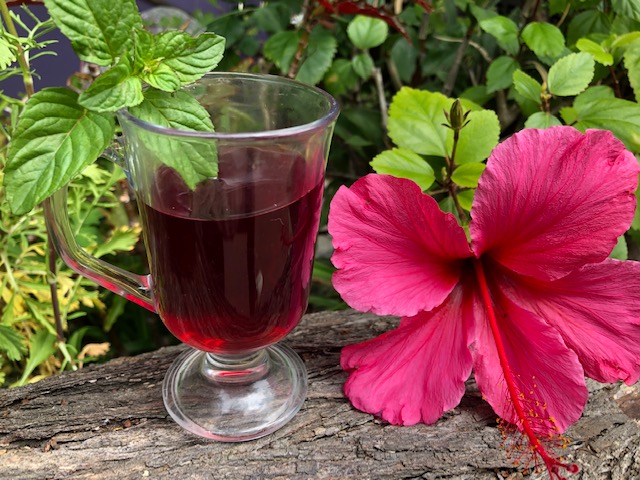
1) Hibiscus 🌺 (hibiscus sabdariffa) Family – malvaceae-mallow family Calyx
- Rich in antioxidants such as beta-carotene, vitamin C and anthocyanin.
- Fights inflammation, Lowers blood pressure. Lowers cholesterol, Promotes weight loss.
- Fights bacteria, Supports liver health and more
Taste: sour, naturally sweet, spicy, and fruity
Action: Anticatarrhal, anti-inflammatory, antimicrobial, antioxidant, astringent, cardiotonic, demulcent, diuretic, hepatic, hypocholesterolemic, immune stimulant, refrigerant, reproductive tonic
Energetics: cooling and drying, uplifting, strengthening, refreshing
Use: Traditionally, hibiscus calyces have been used throughout the world as “refrigerants” to cool the body (Engels, 2007). In Egypt, hibiscus has been used as a diuretic and for cardiac and nerve diseases; in North Africa for coughs and sore throats; in Europe for colds and upper respiratory tract congestion, sleeplessness, and as a laxative and diuretic; and in Iran for hypertension (Engels, 2007).
The sour, astringent, cooling nature of hibiscus helps to cool and regulate the body’s temperature, as well as tone and cool irritated tissue and mucous membranes throughout the digestive tract and genitourinary system. This is particularly indicated in the case of overheated states and inflammation in the body, such as irritation in the liver, stomach, bladder, urinary tract, uterus, or colon. Hibiscus is also clearing, helping to move stuck mucus
in the lungs and energy in the digestive, respiratory, circulatory, and reproductive systems.
Sauce from Herb Academy
2) Peppermint (Mentha x Piperita)
- Relieves gas and bloating while relaxing the digestive muscles and breaks up flatulence.
- Stimulates digestive juices and can ease nausea and motion sickness.
- Aids in colds, fevers, and flu.
Taste: sweetish odor and a warm, pungent taste with a cooling aftertaste
Action: carminative, anti-inflammatory, antispasmodic, aromatic, diaphoretic, antiemetic, nervine, anti-microbial, analgesic
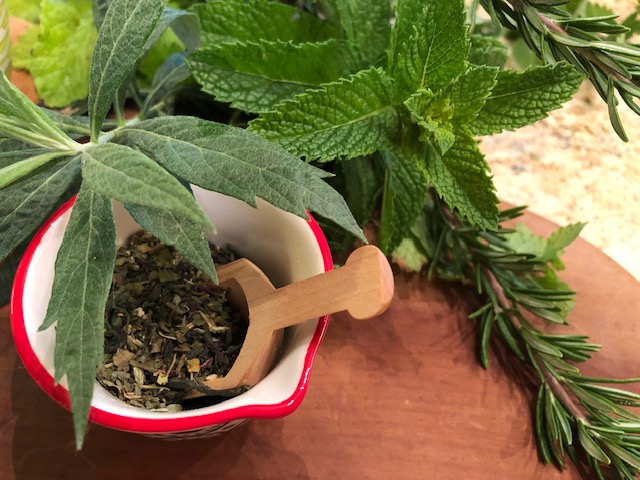
3) Rosemary (Rosmarinus officinalis)
- Help alleviate muscle pain and improve memory.
- Boost the immune and circulatory system, and promote hair growth.
Taste: acrid & aromatic
Action: anti-microbial, anti-inflammatory, anti-oxidant, anti-apoptotic, anti-tumorigenic, anti-nociceptive, and neuroprotectiv
4) Holy Basil, Tulsi (rama – ocimum tenuiflorum)
- Calms the nervous system, moves stagnation, colds and flu, upper respiratory illness.
- Protects against toxicity from chemicals, heavy metals, and radiations.
Taste: robust, slightly sweet flavor and crisp taste
Actions: adaptogen, anti-inflammatory, anti-microbial, anti-viral, anti-fungal, anti-depressant, anti-anxiety,
carminative
5) Calendula (calendula officinalis)
- Prevents muscle spasms, starts menstrual periods, and reduces fever.
- It is also used for treating sore throat and mouth, menstrual cramps, cancer, and stomach and duodenal ulcers.
Taste: Acrid, bitter, cool
Action: Anti-inflammatory, antimicrobial, antispasmodic, cholagogue, hemostatic, lymphatic, vulnerary
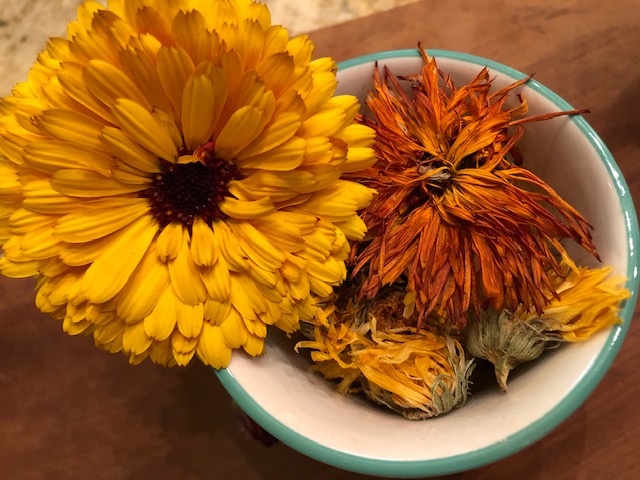
6) Lemon Balm (melissa Officinalis) Family: Lamiaceae
- Calming and uplifting the nervous system
- Relieves spasms and gas, hot water extracts have anti-viral properties
Taste: Acrid, bitter, cool
Actions: carminative, nervine, antispasmodic, antidepressant, diaphoretic, antimicrobial, antiviral, hepatic
Contraindication: hypothyroidism
7) Chamomile (matricaria recutita) Family: Asteraceae
- Calming to the nervous system, anti-inflammatory
- Calming to digestive cramping and gas upset, mild
Taste: flowery, earthy and apple-like sweetness
Actions: nervine, antispasmodic, carminative, anti-inflammatory(抗炎剤), antimicrobial, bitter, vulnerary
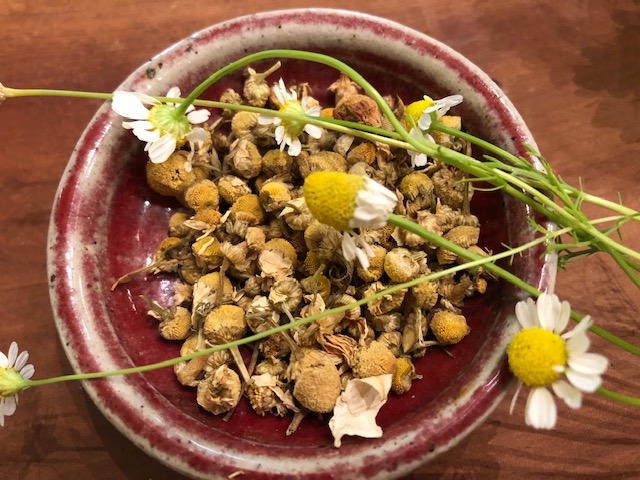
4. TIPS for GROWING MEDICINAL HERBS
(your garden or pots – you can even grow a lot in a small space!)
1) If you love/like gardening or are curious about gardening, you can grow medicinal herbs even in a small container if you do not have a garden and live in an apartment. I once grew them when I was living in the school dormitory.
2) If you have a small space, choose the one easy to grow and you want to make fresh herbal tea.
3) A connection you make with plants/herbs/nature is essential.
4) As you observe the cycle of season/nature/life by little, seeds sprout and grow to produce flowers and maybe seeds again.
5) Recognizing the cycle of life is natural healing.
6) Most medicinal herbs grow like weeds in the wild. They are pretty hardy, so they usually thrive when you give decent soil, light, and water.
5. HOW/WHEN to HARVEST
1) Always harvest in the morning, after the dew has evaporated, and before the sun and heat hit the plant.
2) Make sure to use clean shears. This is beneficial both to you and the plant.
3) Buds and Flowers are best harvested just as they are opening.
4) Don’t wait for them to open fully: they will lose their medicinal potency.
5) Leaves are usually best harvested before a plant is in full bloom.
6. HOW TO PROPERLY DRY
1) Once you’ve harvested medicinal herbs for future use, I recommend drying them to preserve them.
2) Brush off and remove any organic material, such as bugs and dirt.
3) Dried quickly, protected from direct sunlight, packaged, and stored correctly
4) Minimal humidity and good airflow
5) If you use a dehydrator: a temperature should be around 90º to 110º
6) The traditional method for drying herbs is to hang them in small bundles from rafters.
7. FRESH VS. DRIED
1) Fresh-picked herbs taste good, but high-quality dried herbs can be as effective as fresh herbs.
2) The best reason to use dried herbs is that fresh herbs are unavailable year-round, and some medicinal herbs are not grown locally.
3) When making salves and oils, it is better to use dried herbs because the water content in fresh plants can spoil the oil.
If you have a question, send me email sanaehealing@gmail.com or post here.
Thank you!

